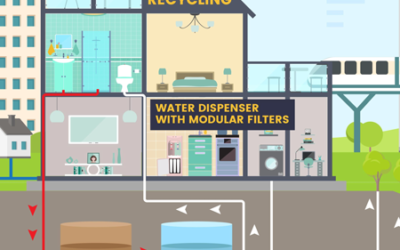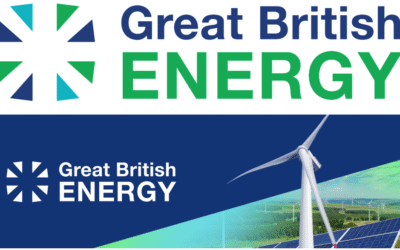Services
ESOSEnergy Saving Opportunity Scheme Compliance Services
ESOS compliance through ISO 50001 or ISO 50002
Ensure ESOS compliance by implementation of ISO 50001 or conducting an energy audit.
Energy Saving Opportunity Scheme (ESOS) is a crucial UK legislation that applies to large organisations with more than 250 employees or a turnover exceeding £44.1m. Non-compliance can result in significant fines, with penalties reaching up to £100,000 (for more details, visit GOV.UK). To meet ESOS requirements, qualifying organisations, including buildings, facilities, transport, and industrial processes, must follow one of two routes:
A. ISO 50001 Implementation
Implement an Energy Management System in alignment with ISO 50001, certified by a UKAS-accredited Certification Body. With a certified ISO 50001 system in place, there is no need for an additional assessment or a qualified lead assessor to review your activities.
Advantages:
- Contribute to the organisation’s continual improvement.
- Improve overall performance, reducing energy consumption and costs.
- Identify and manage risks associated with energy performance.
- Measure and monitor energy-related data to make informed decisions and prioritise energy conservation opportunities.
- Reduce carbon emissions and meet government reduction targets.
- Applicable to multinational companies across various sectors.
- Covers all energy uses, including buildings, transport, and industrial sectors.
- No need to appoint a lead assessor.
Disadvantages:
- Requires annual external audits to maintain or renew ISO 50001 certification.
B. Alternative Compliance Measures
In the absence of ISO 50001 certification, organisations must adhere to the following steps:
⦁ Measure total energy consumption;
⦁ Identify areas of significant energy consumption;
⦁ Select appropriate routes to compliance;
⦁ Ensure areas of significant energy consumption are covered by a compliance route;
⦁ Appoint a qualified Lead Assessor;
⦁ Review assessment outcomes at the board level;
⦁ Submit online notification of ESOS compliance.
According to the Environment Agency’s guidelines, ISO 50002 energy audits provide a recommended approach for fulfilling these requirements.
With our expertise in both ISO 50001 implementation and ISO 50002 energy audits, we can guide you in selecting the most suitable route based on your organisation’s goals, resources, and timelines. Our team of professionals will work closely with you to ensure a smooth and efficient compliance process, maximising the benefits and minimising any challenges along the way.
Advantages:
- Covers all energy uses, including buildings, transport, and industrial sectors.
- Utilise existing energy efficiency compliance or energy auditing data.
- Can be used to complete the energy review of ISO 50001 EnMS implementation.
- Requires only one assessment per ESOS Phase (every 4 years).
Disadvantages:
- Need to appoint a lead assessor to evaluate energy audit results.
- Potential duplication of assessments already conducted under other schemes.
Implementation of EnMS based on ISO 50001
The publication of the ISO 50001 standard in 2011 marked a significant milestone in providing organisations with a robust and practical framework for implementing Energy Management Systems (EnMS). Built on the PDCA (Plan-Do-Check-Act) model of continual improvement, which is also used in other management system standards like ISO 14001, ISO 50001 aims to enhance the energy performance of organizations by establishing systematic processes based on facts and data .
At CAESL, we recognise the importance of ISO 50001 in driving energy efficiency and sustainability. As a comprehensive consultancy service, we are with you every step of the way, from the initial stages of EnMS implementation to the certification audit. Our expert team guides and supports you throughout the entire implementation process. To ensure a seamless journey towards ISO 50001 certification, we follow a five-step process.
1- Gap analysis
Through a comprehensive checklist, we conduct a thorough evaluation of your current energy management activities. This enables us to identify gaps and determine the necessary actions to align with the ISO 50001 standard. Areas of analysis include understanding the organisational context, leadership and commitment, energy planning (strategic and tactical), operations, and monitoring, measurement & analysis.
2- Planning
ISO 50001 emphasises two key aspects of EnMS planning: strategic planning and tactical planning. In the high-level strategic planning phase, our compliance team collaborates with you to identify risks, opportunities, and action plans for addressing them. This process enables your organisation to forecast potential scenarios and proactively address any undesired consequences before they occur.
Tactical planning involves collecting and evaluating historical and current data on energy use and consumption to identify significant energy uses (SEUs). When determining SEUs, two criteria are considered: substantial energy consumption and significant potential for improving energy performance . This process encompasses several key steps:
- Identifying Significant Energy Uses (SEUs):
Through data analysis, we pinpoint areas of your organisation that consume a significant amount of energy. These SEUs are selected based on their potential for energy performance improvement.
Prioritising Energy Conservation Opportunities (ECOs):
We prioritise ECOs within the identified SEUs, focusing on opportunities that offer the greatest potential for energy savings. This enables us to allocate resources effectively and drive impactful energy efficiency measures.
- Establishing Energy Baselines:
By establishing energy baselines for the SEUs, we create a reference point for measuring energy performance improvements. These baselines help track progress and evaluate the effectiveness of energy-saving initiatives.
- Developing Energy Performance Indicators (EnPIs):
EnPIs are key metrics used to quantify and monitor energy performance within the SEUs. Our team develops customised EnPIs that align with your specific organisational goals and provide meaningful insights into energy savings.
- Setting and Monitoring Energy Objectives, Targets, and Action Plans:
We collaborate with you to establish energy objectives, targets, and action plans tailored to each SEU. These targets and plans guide the implementation of energy-saving measures and enable ongoing monitoring and reporting of progress.
Additionally, we leverage innovative data analysis techniques, including machine learning, to identify the most suitable EnPIs for your organisation. This advanced approach ensures accurate and effective measurement of energy savings, providing tangible evidence of your energy efficiency efforts.
CAESL leverages its proficiency in strategic planning, advanced data analysis, and cutting-edge machine learning techniques to maximise your energy performance and foster sustainable results. Reach out to us now and explore the possibilities of our pioneering approach in assisting your organisation’s pursuit of energy efficiency. Let us be the catalyst for your energy-saving journey, ensuring a brighter and greener future.
3- Operation
The effective implementation of EnMS-related activities and processes is crucial for the success of your energy management system. This encompasses various aspects such as operation, maintenance, design, procurement, communication, personnel competency, and awareness building . At CAESL, we collaborate closely with your personnel to establish operational control criteria for significant energy uses (SEUs) and implement energy-efficient design and procurement processes.
4- Training
Throughout the EnMS implementation phases, we provide comprehensive training courses tailored to your organisation’s needs. Our training sessions range from short, focused sessions to multi-day courses that incorporate real-world examples, case studies, and practical exercises. In addition to routine training, our implementation projects include the following specialised courses:
- Requirements of the energy management system: Understanding the key elements and obligations of ISO 50001 and how to effectively incorporate them into your operations.
- Measuring energy performance in accordance with ISO 50006: Building the capability to measure and evaluate energy performance using the guidelines provided in ISO 50006.
- EnMS internal audit: Equipping your internal auditors with the knowledge and skills necessary to conduct effective EnMS audits, ensuring ongoing compliance and continual improvement.
5- Certification
the ultimate goal of EnMS implementation is achieving certification. As your implementation journey progresses, we assist you in preparing for the ISO 50001 certification process. Our team provides guidance and support, ensuring that all necessary documentation, processes, and procedures align with the requirements for certification. We work hand in hand with you to ensure a successful certification audit outcome.
We recognise that the operational phase, along with comprehensive training and certification, is vital for the long-term success of your EnMS. We are dedicated to empowering your organisation to achieve energy efficiency, optimise operations, and meet your sustainability goals.
Contact us today to discuss how our operational expertise, tailored training courses, and certification support can drive your EnMS implementation to new heights.
Energy Audit based on ISO 50002
ISO 50002 provides a well-established process for conducting technical energy audits. In accordance with this standard, an energy audit is a systematic analysis of energy efficiency aimed at identifying, prioritizing, and reporting on opportunities for energy performance improvement. By measuring energy data and relevant variables, an energy audit involves a detailed evaluation and analysis of the energy performance of an organization, equipment, facilities, systems, or processes. The primary objective of ISO 50002 is to establish the minimum requirements necessary to identify energy-saving opportunities.
At CAESL, we offer comprehensive consultancy services to conduct energy audits based on ISO 50002 requirements. We work closely with your organization throughout the entire process, providing expert guidance and support. The duration of an energy audit can vary from 3 to 9 months, depending on the complexity of your existing equipment, facilities, and energy systems.
1- Energy audit planning
Based on the scope and objectives of the energy audit, a thorough planning phase is conducted to ensure the success of the audit program. This includes:
- Required Preliminary Information: Gathering necessary information and relevant data from the organisation to provide a solid foundation for the audit process;
- Time Period and Site Visit: Determining the appropriate timeframe to conduct site visits and complete the energy audit, ensuring efficiency and accuracy;
- Organisation Representative: Designating a representative within the organisation who will be responsible for coordinating and facilitating the audit process;
- Regulatory and Other Constraints: Considering any regulatory requirements or other constraints that may impact the audit process;
- Project Considerations: Addressing specific considerations related to the energy audit project, such as budget, resources, and unique organisational requirements.
2- Energy-related data collection
During this stage, comprehensive energy-related data is collected, collated, and recorded to support the audit objectives. The following information is typically gathered, covering a period of at least 12 months:
- List of Energy Consuming Equipment, Facilities, Systems & Processes: Identifying and documenting the characteristics of energy-consuming assets within the organisation;
- Energy Consumption and Energy Bills: Collecting data on energy consumption patterns and reviewing energy bills to understand usage trends and costs;
- Relevant Variables: Considering variables that impact energy consumption, such as production levels, occupancy rates, or weather conditions;
- Energy-Related Measurements: Capturing specific measurements related to energy usage, efficiency, or performance;
- Operational History and Past Events: Examining historical operational data and events related to energy systems, highlighting any anomalies or significant changes;
- Monitoring Equipment: Taking into account the availability of monitoring equipment, such as distributed control systems, that can provide additional insights;
- Design, Operation, and Maintenance Documents: Reviewing relevant documents related to the design, operation, and maintenance of energy systems and equipment;
- Other Relevant Data: Incorporating any additional data or information that may be pertinent to the energy audit.
3- Measurement plan
To ensure accurate on-site data measurement and collection, a comprehensive measurement plan is essential. The measurement plan outlines the key items that should be included and considered during the data collection process. The key items typically contained in the measurement plan are listed below:
- A list of measurement points and their measuring equipment;
- Measurement duration and frequency for each measurement;
- Accuracy and repeatability required for the measurements;
- Relevant variables provided by the organisation;
- Responsibilities for carrying out the measurements.
4- Conducting the site visit
As an integral part of the energy audit process, site visits are conducted to gain a comprehensive understanding of your organisation’s energy usage and identify potential energy-saving opportunities. During the site visit, our experts perform the following activities:
(a) Observing Energy Uses:
We closely observe the various energy uses within your organisation, including equipment, facilities, systems, and processes. This allows us to gain first-hand insights into the energy consumption patterns and identify areas for improvement.
(b) Evaluating Energy Consumption:
We assess and evaluate the energy consumption levels of different assets and areas within your organization. By analysing historical data and conducting on-site measurements, we gather detailed information on energy consumption profiles.
(c) Understanding the Impact of Operating Routines:
We delve into the operational routines and practices employed within your organisation. This helps us understand how energy is utilised during different operational scenarios and identify potential efficiency improvements.
(d) Ensuring Representativeness of Measurements:
During the site visit, we ensure that the measurements taken are representative of your organisation’s normal operational practices. This involves verifying that the measurements accurately reflect the energy consumption patterns and usage trends.
(e) Validating Historical Data:
We cross-check the historical data provided to us with the observed energy usage during the site visit. This validation process ensures that the historical data accurately represents your organisation’s normal operating conditions and energy consumption.
(f) Revising and Finalising the Measurement Plan:
Based on the insights gained during the site visit, we may revise and finalise the measurement plan if necessary. This ensures that the measurement activities align with the observed energy consumption patterns and savings opportunities identified.
By conducting thorough site visits, we tailor our approach to reflect the specific energy consumption patterns and savings opportunities within your organisation. This enables us to provide customized recommendations that align with your operational practices and maximise energy efficiency. CAESL acknowledges the crucial role that site visits play in gaining a thorough understanding of your energy usage.
5- Analysis
During the analysis phase of the energy audit, we focus on establishing and evaluating the current energy performance of the energy uses within your organisation. This involves a comprehensive assessment to identify areas for improvement and propose practical and cost-effective energy conservation opportunities. The key activities during this phase include:
(a) Analysing Energy Consumption and Efficiency:
We analyse your organisation’s energy consumption patterns and evaluate its energy efficiency performance. This analysis provides insights into where energy is being utilised and identifies areas with potential for improvement.
(b) Identifying Energy Performance Improvement Opportunities:
Based on the analysis of energy consumption and efficiency, we identify specific ways in which your organization can enhance its energy performance. This may include optimising operational strategies, implementing technology solutions, or introducing behavior change initiatives.
(c) Proposing Practical and Cost-effective Energy Conservation Opportunities:
We develop practical and cost-effective energy conservation opportunities tailored to your organisation’s unique requirements. These opportunities are designed to reduce energy consumption, increase efficiency, and deliver tangible savings.
(d) Estimating Costs and Benefits:
For each energy-saving opportunity identified, we estimate the associated costs and benefits. This analysis helps you evaluate the economic viability and potential return on investment of implementing the proposed measures.
(e) Ranking Energy Performance Improvement Opportunities:
To prioritise action, we rank the identified energy performance improvement opportunities based on factors such as energy savings potential, feasibility, and impact on organisational goals. This allows you to focus on initiatives that will deliver the greatest benefits.
As part of the analysis, we ensure that at least 90% of your organisation’s total energy consumption is covered, aligning with ESOS requirements. Additionally, the performance improvement recommendations can encompass a range of measures, including:
- Installing smart meters and energy data monitoring tools to enable real-time monitoring and management;
- Implementing changes to operation and maintenance strategies to optimise energy performance;
- Undertaking capital investment projects to upgrade equipment, systems, or infrastructure for improved energy efficiency;
- Initiating behaviour change projects to raise awareness, engage employees, and promote energy-conscious practices.
CAESL adopts a holistic analysis approach to pinpoint the optimal opportunities for enhancing your organisation’s energy performance. Get in touch with us today to explore how our specialised knowledge can bolster your energy conservation initiatives and yield significant advantages. Let us be your trusted partner in driving tangible benefits through sustainable energy practices.
6- Energy audit reporting
The energy audit report is a crucial deliverable that summarises the findings, recommendations, and key outcomes of the energy audit process. It provides a comprehensive overview of the audit results and serves as a guide for implementing energy-saving measures. The main topics typically included in the energy audit report are:
- Executive Summary: A concise overview of the audit findings, highlighting key energy performance improvement opportunities and their potential benefits;
- Introduction: An introduction to the energy audit process, including the objectives, scope, and methodology employed during the audit;
- Energy Consumption Analysis: A detailed analysis of the organization’s energy consumption patterns, identifying areas of high consumption and potential inefficiencies;
- Energy Efficiency Evaluation: An evaluation of the organization’s energy efficiency performance, highlighting areas where improvements can be made;
- Energy Conservation Opportunities: A comprehensive list of practical and cost-effective energy conservation opportunities identified during the audit, accompanied by detailed descriptions and potential savings estimates;
- Cost-Benefit Analysis: An assessment of the costs and benefits associated with implementing the recommended energy-saving measures, providing insights into the potential return on investment;
- Prioritisation and Ranking: A prioritised list of the energy conservation opportunities based on factors such as energy savings potential, feasibility, and impact on organisational goals;
- Implementation Roadmap: A roadmap that outlines the recommended actions, timelines, responsibilities, and resources required for implementing the energy-saving measures;
- Conclusion and Recommendations: Concluding remarks summarising the key findings and recommendations, emphasising the potential benefits and urging the organisation to take action.
Get In Touch
Are you interested in learning more about our solution and services? If so, get in touch with us today. We would be happy to discuss our offerings with you in detail and answer any questions you may have.
info@caesl.co.uk
+44 23 8111 2562
+44 333 090 5339
Arena Business Centre, Threefield House
Threefield Lane, Southampton, SO14 3LP UK
Latest News
Smart Water Solutions in the Built Environment: Why Greywater Recycling Deserves Your Attention
As the UK faces rising water stress due to climate change, urbanisation, and growing demand, water efficiency has become a critical element of sustainable building design. Businesses and developers...
Strategic Energy Transformation: A Long-Term Roadmap for Sustainable Leadership
As global energy landscapes shift and environmental responsibilities escalate, Holding and Mega companies are increasingly re-evaluating their long-term strategies. Many have adopted the ISO 50000...
Great British Energy: Powering a Cleaner, Fairer Future for Communities
The UK’s energy revolution has reached a pivotal milestone: Great British Energy, the nation’s new publicly owned energy company, has secured parliamentary approval and is now poised to deliver...



